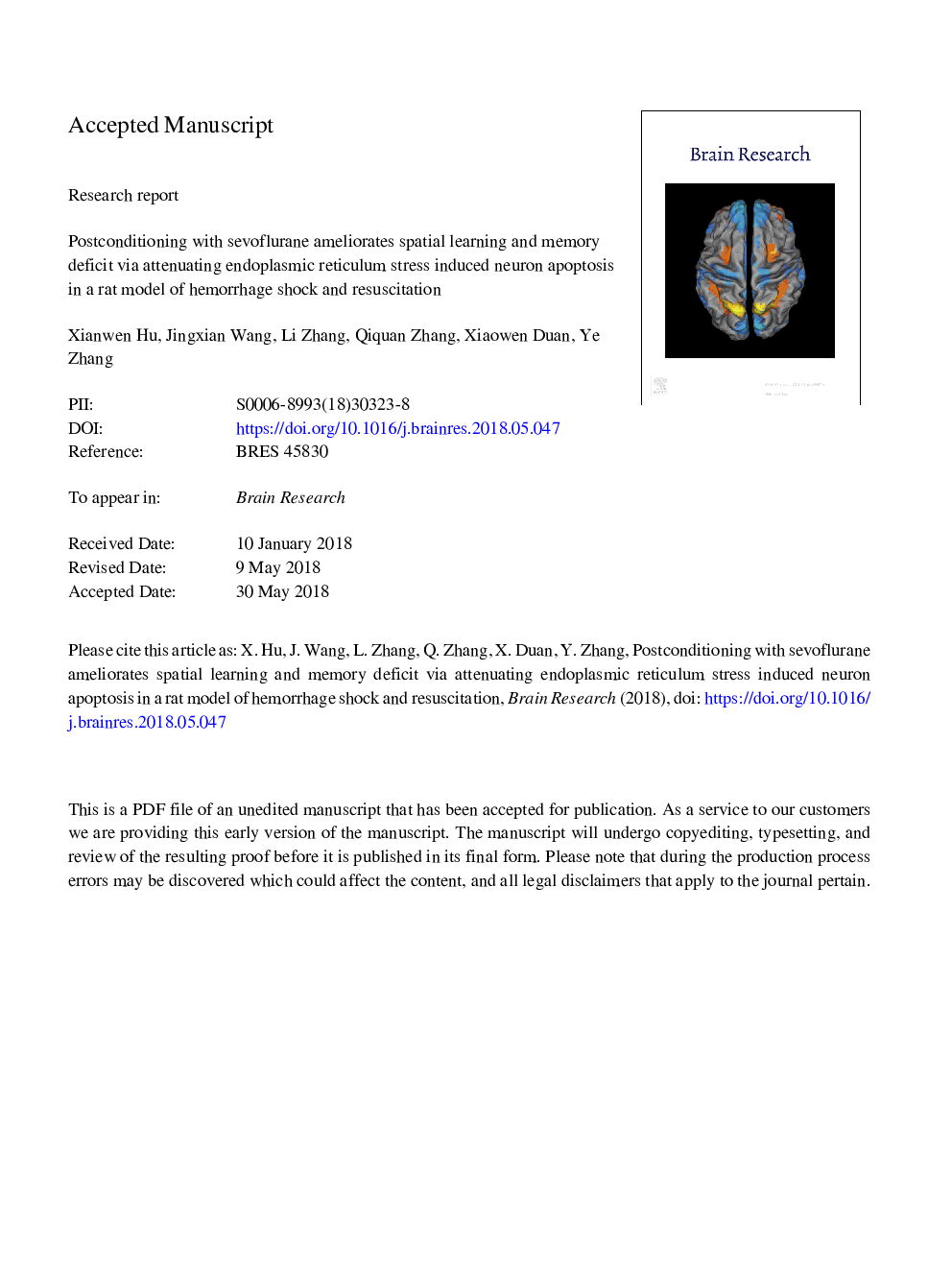| Article ID | Journal | Published Year | Pages | File Type |
|---|---|---|---|---|
| 8839683 | Brain Research | 2018 | 20 Pages |
Abstract
Hemorrhage shock could initiate endoplasmic reticulum stress (ERS) and then induce neuronal apoptosis. The aim of this study was to investigate whether sevoflurane postconditioning could attenuate brain injury via suppressing apoptosis induced by ERS. Seventy male rats were randomized into five groups: sham, shock, low concentration (sevo1, 1.2%), middle concentration (sevo2, 2.4%) and high concentration (sevo3, 3.6%) of sevoflurane postconditioning. Hemorrhage shock was induced by removing 40% of the total blood volume during an interval of 30â¯min. 1â¯h after the completion of bleeding, the animals were reinfused with shed blood during the ensuing 30â¯min. The spatial learning and memory ability of rats were measured by Morris water maze (MWM) test three days after the operation. Terminal deoxynucleotidyl transferase-mediated dUTP nick end labeling (TUNEL) positive cells in the hippocampus CA1 region were assessed after the MWM test. The expression of C/EBP-homologousprotein (CHOP) and glucose-regulated protein 78 (GRP78) in the hippocampus were measured at 24â¯h after reperfusion. We found that sevoflurane postconditioning with the concentrations of 2.4% and 3.6% significantly ameliorated the spatial learning and memory ability, decreased the TUNEL-positive cells, and reduced the GRP78 and CHOP expression compared with the shock group. These results suggested that sevoflurane postconditioning with the concentrations of 2.4% and 3.6% could ameliorate spatial learning and memory deficit after hemorrhage shock and resuscitation injury via suppressing apoptosis induced by ERS.
Related Topics
Life Sciences
Neuroscience
Neuroscience (General)
Authors
Xianwen Hu, Jingxian Wang, Li Zhang, Qiquan Zhang, Xiaowen Duan, Ye Zhang,
